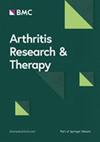贝叶斯模型分析炎症性风湿性肌肉骨骼疾病患者在非医疗转换情况下合并症与生物仿制药治疗保留率的关系
IF 4.9
2区 医学
Q1 Medicine
引用次数: 0
摘要
目的:分析炎症性风湿性肌肉骨骼疾病(RMD)患者在6个月内从原研阿达木单抗(ADA)非医疗转换为其ABP501生物类似物(ABP)的临床结果与作为治疗中止风险因素的合并症的关系。从 2018 年 10 月起,从大型常规数据库中确定了从原研 ADA 转为 ABP 的 RMD 患者。收集了非医疗转换时(基线)以及 3 个月和 6 个月的记录临床数据。合并症用基线时的夏尔森合并症指数(CCI)表示,并根据 CCI > 0 对患者进行分类。使用贝叶斯指数回归分析了 CCI = 0 和 CCI > 0 患者 6 个月内 ABP 保持率的差异。结果发现,共有111名患有轴性脊柱关节炎(68人)、类风湿性关节炎(23人)和银屑病关节炎(15人)的患者,其中74.8%的患者在6个月后继续使用ABP治疗,而较小比例的患者要么转用了另一种ADA生物仿制药(10.8%),要么转回了原研ADA(7.2%),要么转用了其他生物制剂(3.6%),要么退出了治疗(3.6%)。基线时,38% 的患者 CCI > 0。心血管合并症(40%)最普遍,其次是皮肤病(33%)、胃肠道疾病(20%)和眼部疾病(20%)。74% 的 CCI = 0 患者和 76% 的 CCI > 0 患者在 6 个月后继续接受 ABP 治疗。贝叶斯分析显示,各组间的 APB 持续率仅有微小差异(月)(估计值 0.0012,95% 可信区间 (CrI) -0.0337 至 0.0361)。对年龄、性别和疾病亚型进行调整后发现,CCI > 0 的患者保留率更短一些,但差异的分布包括 0(估计值为 -0.0689,95% 可信区间为 -0.2246 至 0.0234)。在 RMD 患者的非医疗转换情景中,没有证据表明不同合并症组别在 6 个月的 ABP 保持率上存在显著差异。本文章由计算机程序翻译,如有差异,请以英文原文为准。
A Bayesian model to analyse the association of comorbidities with biosimilar treatment retention in a non-medical switch scenario in patients with inflammatory rheumatic musculoskeletal diseases
To analyse clinical outcomes of a non-medical switch from originator adalimumab (ADA) to its ABP501 biosimilar (ABP) over 6 months in patients with inflammatory rheumatic musculoskeletal diseases (RMD) in relation to comorbidity as a risk factor for therapy discontinuation. RMD patients switching from originator ADA to ABP were identified from a large routine database from October 2018 onwards. Documented clinical data at the time of non-medical switching (baseline), and at 3 and 6 months were collected. Comorbidities were represented by the Charlson Comorbidity Index (CCI) at baseline and patients were categorized based on CCI > 0. Differences in the ABP retention rate over 6 months between patients with CCI = 0 and patients with CCI > 0 were analysed using Bayesian exponential regression. A total of 111 patients with axial spondyloarthritis (n = 68), rheumatoid arthritis (n = 23) and psoriatic arthritis (n = 15), were identified, 74.8% of whom had continued treatment with ABP after 6 months, while a smaller proportion had either switched to another ADA biosimilar (10.8%), switched back to originator ADA (7.2%), switched to a different biologic (3.6%), or dropped out (3.6%). At baseline, a CCI > 0 was found in 38% of patients. Cardiovascular comorbidities (40%) were most prevalent followed by diseases of the skin (33%), the gastrointestinal tract (20%) and the eye (20%). ABP treatment was continued after 6 months in 74% of patients with CCI = 0 and in 76% with CCI > 0. Bayesian analysis showed only a small difference (months) in the APB continuation rate between groups (estimate 0.0012, 95% credible interval (CrI) -0.0337 to 0.0361). Adjusting for age, sex, and disease subtype revealed somewhat shorter retention rates for patients with CCI > 0, but the distribution of the difference included 0 (estimate -0.0689, 95% CrI -0.2246 to 0.0234). In a non-medical switch scenario of RMD patients, there was no evidence for a considerable difference in ABP retention rates over 6 months between comorbidity groups.
求助全文
通过发布文献求助,成功后即可免费获取论文全文。
去求助
来源期刊

Arthritis Research & Therapy
RHEUMATOLOGY-
CiteScore
8.60
自引率
2.00%
发文量
261
审稿时长
14 weeks
期刊介绍:
Established in 1999, Arthritis Research and Therapy is an international, open access, peer-reviewed journal, publishing original articles in the area of musculoskeletal research and therapy as well as, reviews, commentaries and reports. A major focus of the journal is on the immunologic processes leading to inflammation, damage and repair as they relate to autoimmune rheumatic and musculoskeletal conditions, and which inform the translation of this knowledge into advances in clinical care. Original basic, translational and clinical research is considered for publication along with results of early and late phase therapeutic trials, especially as they pertain to the underpinning science that informs clinical observations in interventional studies.
 求助内容:
求助内容: 应助结果提醒方式:
应助结果提醒方式:


